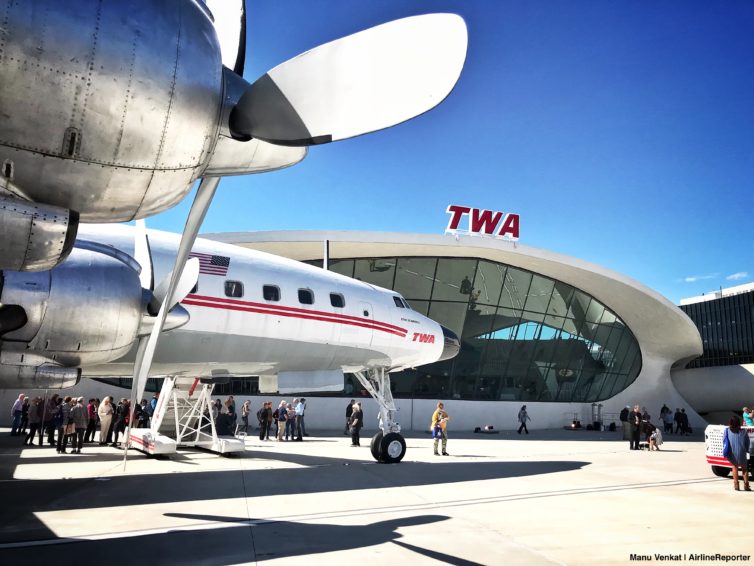
Is there a list of AvGeek wonders of the world? Probably not, but if there was, the new TWA Hotel at New York’s JFK International Airport was trying from the outset to make it onto the list. Initially I was worried that the project — built around the historic TWA Terminal at JFK — might be a victim of stratospheric expectations. But from the moment I walked into the historic gem of a building it was clear that the attraction was everything we all wanted it to be, and more.
Just like the beautifully restored Lockheed Constellation sitting on the premises, the TWA Hotel fires on all cylinders. It’s as much a museum as a hotel, with tons of exhibits about the jet age’s golden years. The staff is having a total blast, with 60’s-style uniforms to match. There’s even an infinity pool on the roof with an incredible view of the ramp and runways. I mean seriously, how can you beat all that??
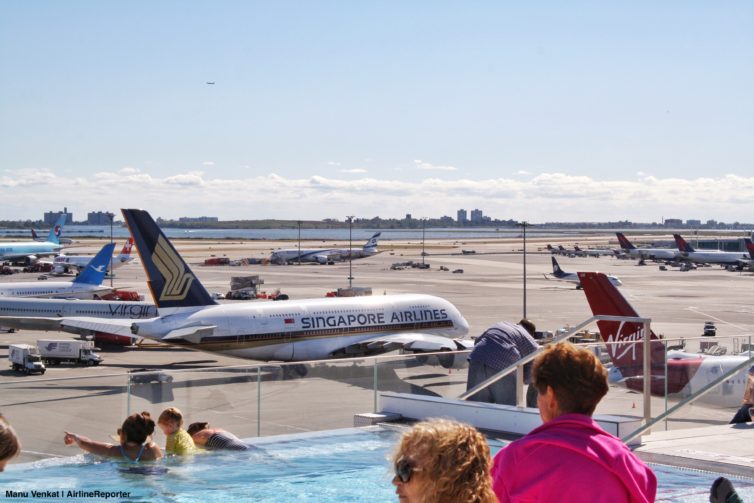
If by this point you’re not itching to see all the photos and videos we took during our visit, we’re questioning your AvGeek credentials. Read on and enjoy!
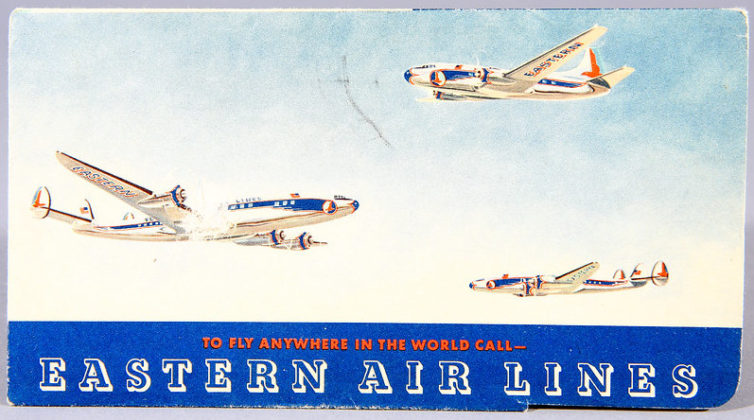
A little bit of Eastern Air Lines history! (which can be yours)
Looking for that perfect holiday gift for the avgeek(s) in your family? Need a little something for yourself?
We might have just the ticket for you. My name is Jeremy and I am an Avgeek, photographer, and friend/friendly frenemy of the guy running this site, David Parker Brown. Iam [still] selling a huge chunk of his airline collection.
For regular followers, you might’ve seen this before, we plugged it in April and a lot of you were able to snatch up some great stuff. But in case you were on the fence, there’s still well over 1,500 items left for sale.
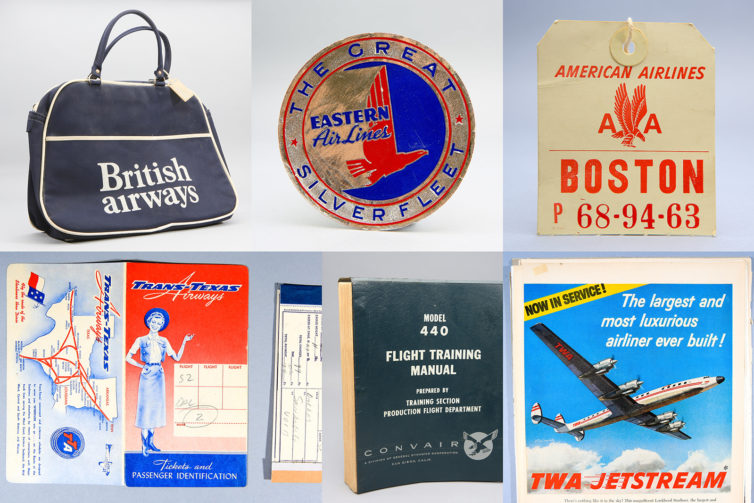
A little bit of airline memorabilia for everyone!
There’s something for every AvGeek here: post cards, menus, paper ads, posters, bag tags, matchbooks, route maps, timetables, and even a small number of vintage hand bags’¦including a few Pan Am. And that’s only part of it ’“ all in all there’s over 2,000 items for sale.
Easier than eBay, don’t have to travel to the big shows, and David knows where I live, if something goes bad on you (And I will make a visit to his house for you -David). There are lots of photos here but that’s only about 75% of the collection: the full list is located here on a detailed spreadsheet.
If you see something you like, shoot him me email (je*************@***il.com) and let a bit of airline history into your home in time for the holidays!
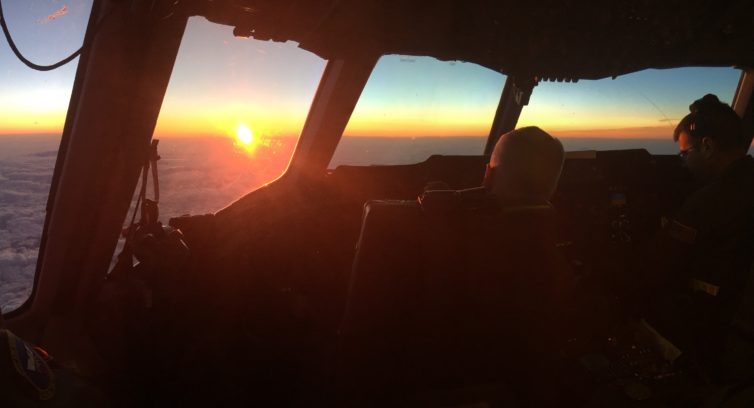
Sunrise on the flight deck over the Atlantic on an overnight eastbound leg from the U.S. to Europe -Photo: Doug Zschoche | Officer Wayfinder
Australian flag carrier Qantas Airways recently completed the first-ever commercial flight from New York’s JFK airport to Sydney. As part of a program dubbed Project Sunrise, the flight was a nearly 20-hour marathon that traveled just under 10,000 miles. Operated by a brand-new Boeing 787-9 on its delivery, it was one of three test flights the airline is doing to explore the viability of a non-stop service from JFK-Sydney. There were only 40 passengers onboard ’“ all test subjects for Australian researchers and Qantas, who hope to perfect ultra-long-haul flying.
Qantas plans to launch the route in 2023, using a yet-to-be-determined airframe (the airline is exploring either the Boeing 777X or the Airbus A350ULR). Currently, the 25 longest flights in the world are all more than 8,000 miles in distance and have block times of 16 hours or longer.
Number 21 on that list is Newark to Hong Kong ’“ which, when launched in 2001, was the longest flight in the world. Ultra-long-haul flying has become an arms race since then ’“ with every airline seemingly trying to outdo the next with mind-numbingly long flights.
While there was much hype surrounding Qantas’ flight, ultra-long-haul flying has almost become commonplace. This flight was more of a PR stunt than anything, but was impressive nonetheless based on the history of how we got here.
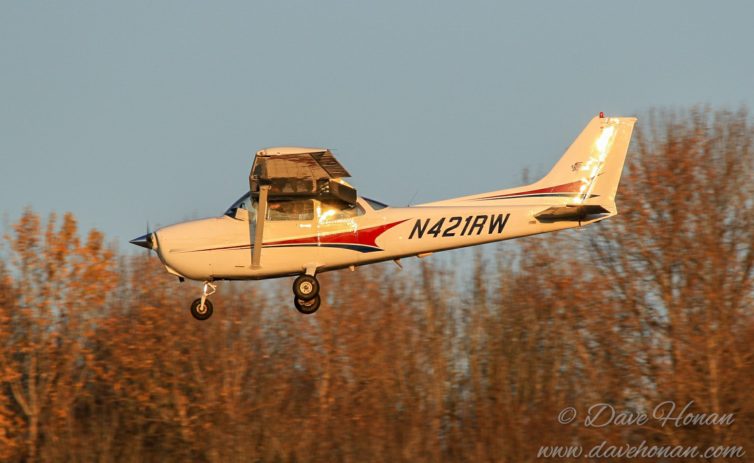
Doing some solo pattern work on a recent sunny Seattle afternoon – Photo by Dave Honan
This is a continuation of my multi-part series on learning to fly. You can read the whole Fly With Francis series here.
Progress is being made: I’ve done several more solo flights, and am feeling lots better about landings, maneuvers, and dealing with air-traffic control. We’re working on navigation and cross-country stuff now.
The blues part from the headline comes from the weather-enforced gaps in my training flights. Here in the Pacific Northwest, winter usually means low ceilings and visibility-lowering precipitation. Scheduling time in aircraft becomes a game of chance – you sign up for sessions in advance and then hope for the best.
We’ve tried three times now for a cross-country flight that will qualify for the FAA requirement of flying at least 50 miles away from one’s home airport. We’ve had to cancel all three because of poor weather.
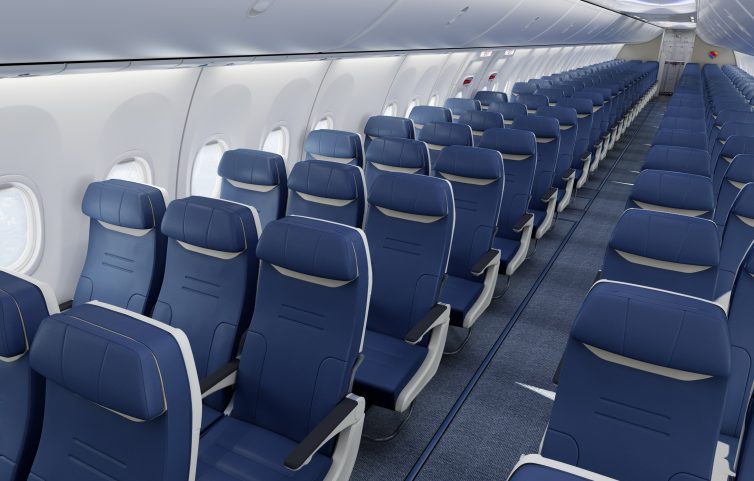
With the Rapid Rewards updates, earning free seats is easier for some but harder for others. – Photo: Southwest Airlines
Last month Southwest Airlines announced three updates to their Rapid Rewards frequent flyer program. Typically when travel and hospitality rewards programs are updated, it results in a net-negative for consumers. These changes, however, are more of a mixed bag. The updates have also resulted in some confusion. Following the announcement, I received a handful of notes from folks asking for further explanation. It seems that when it comes to Southwest, I’m The Points G… Um, I guess we’ll go with Guru? [Editor: We also considered Gangsta, Gentlemen, Gladiator, Gossiper, Goat, Grumbler, Grizzly, and our favorite Geezer]
Let’s explore the changes together…






